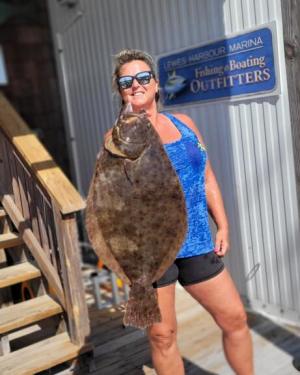For most working people, summer is over. Kids are back in school and fishing trips are going to be harder to come by. Fishing tackle that has seen some rough use during the summer can use some TLC right now to be ready for those important fall trips when big fish move down the coast on their southern migration.
The first thing to check is your fishing line. This was brought home to me Thursday on Broadkill Beach when my first cast into a hard east wind went much farther than I thought it should. The mystery was soon solved when I saw the end of my running line flapping in the breeze. My Albright knot that had been tied last year had finally seen its last pass through the guides and said goodbye. That’s my bad. I should have followed my own advice and retied it in the spring.
If you use monofilament line, it is only good for one, or at best, two years. The sun and saltwater cause the line to deteriorate, and this is why you should replace it on a regular schedule. Old mono will be brittle and break well below its rated strength.
I once fished on a company boat in the White Marlin Open. The rods and reels were all top-notch and the baits were perfectly rigged. The line on the reels was IGFA rated and, unfortunately, about 100 years old. We raised several white marlin that day, and as soon as I came tight on the fish, the line broke.
The next day, I showed up with a friend’s set of Penn rods and reels with fresh line and, of course, we only saw a few marlin for the remainder of the tournament. At least we were able to catch and release those fish.
Braided line will last much longer than mono, but it has very poor abrasion resistance. This is why you should put on a shock leader of fluorocarbon line. This is especially important if you are bottom fishing or surf fishing. As mentioned earlier, I use an Albright knot. My son Ric uses a slim beauty. Instructions on how to tie these knots are available online.
Maintaining the reel your line is on is another important service. Check it for proper operation and give it a few shots of WD-40, then wipe off the excess. All of my reels get a shot of WD-40 after every use.
Now is a good time to check and clean up your tackle bag or box. My old tackle bag died a noble death after many years of service and, thanks to my sister’s generous birthday gift, I was able to buy a KastKing bag that is made for saltwater.
In transferring my stuff from one bag to the other, I discovered things I hadn’t used in years. They were discarded. The new bag also has many more pockets, so instead of having my Fishbites and Gulp! all in one pocket, each has its own space.
If, like me, you tend to just toss things into your bag or box when fishing, now is the time to return some semblance of order to your storage system. Keep in mind that fall fishing will be different from fishing in the summer when deciding what tackle to carry with you.
Or, you can be like me and take everything you own just in case.
Fishing report
Dolphin fishing was off the charts Sunday. Just about everybody who targeted dolphin caught their 10-fish-per-person limit. This includes the Morning Star head boat out of Ocean City, Md., that filled every cooler on the boat and came in early. The fish were all good-sized; not peanuts, but solid 5-pounders or larger. The Del-Jersey-Land Reef was one location mentioned. Another angler took a 12-pounder off a small piece of Styrofoam.
Flounder action improved somewhat at the Old Grounds and A Buoy. Some boats caught their limits, while others struggled to catch just a few. Sea bass were mixed in with the flounder.
Delaware Bay saw continued good action with spot and croaker. The reef sites held most of these fish, with some caught from the fishing pier in Cape Henlopen State Park. With bloodworms hard to get and expensive when you do get them, lug worms and Fishbites bloodworms have become very popular. Not only are they less expensive than bloodworms, they work just as well.
While reports of big sheepshead have slowed, some are still being caught over hard structure such as the Outer Wall, the Ice Breakers and the jetty at Indian River Inlet. Sand fleas remain the best if not the only bait.

























































